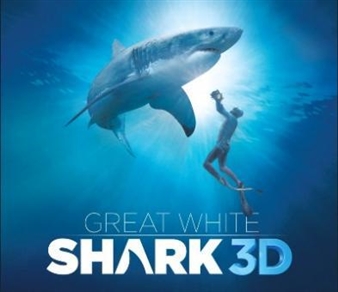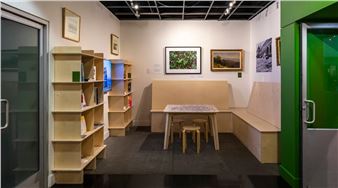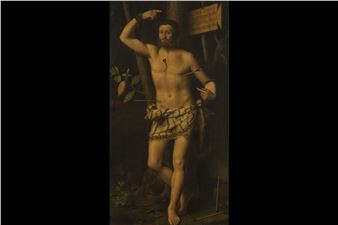Elizaveta Rukavishnikova: Signs
Erarta Museum of Contemporary Art presents an exhibition by Elizaveta Rukavishnikova whose artworks entrance the viewers with their enigmatic patterns and encrypted mysteries.
Artist Elizaveta Rukavishnikova spent nine years of her life in Johannesburg, South Africa. The time lived there profoundly influenced her personality and worldview. The scroll-like works featured in the show also date from that period. This is how the artist explains their origin: ÔÇÿI went to the Johannesburg Art Gallery and saw a lot of ancient Zulu artefacts, the purpose of many of which remains unknown. I was particularly inspired by one piece that looked like a space rocket. After seeing the exhibition, I went to my studio and started obsessively writing all these strange monochrome characters. They happened to be blue ÔÇô simply because I am fond of this colour and had a large stock of blue paint in the studio. I spent nearly two months in this trance-like state. Everyone thought I was nuts, and only one guy I shared my studio with, head of the fine arts department at the local university, provided continuous support.ÔÇÖ
African writing systems are unlike those we are used to in that they are based on a different understanding of language, by far more emotional and intuitive. Although many peoples of Africa have written languages, the symbols inscribed by Elizaveta bear no resemblance to any actual sign system. The practice of composing such texts is usually referred to as ÔÇÿabstract calligraphy.ÔÇÖ Struggling to decipher the inscription, the viewer inadvertently focuses on the form and structure of ÔÇÿwritingÔÇÖ: in the absence of commonly accepted meaning, attention shifts to the aesthetic beauty of the characters. The ÔÇÿreadingÔÇÖ process recalls the Rorschach psychological test whereby a personÔÇÖs subconscious is revealed through the interpretation of abstract inkblots: every viewer projects his or her own meanings and stories onto the text.
The oldest known manmade symbols were discovered in the Auditorium Cave in Bhimbetka, India. These round cupola-like hollows and circular lines gouged out of rock were created between 700th and 290th millennia BC during the Acheulean period of the Lower Palaeolithic era, while the circles and dots found in the Cave of El Castillo in Spain were painted with pigment around the 39th millennium BC. Although exact meaning of these images is unknown, it is generally believed that the circles in ancient cultures are solar signs representing the sun and the sacral cycle of life and death. Just like the archaic petroglyphs, Elizaveta RukavishnikovaÔÇÖs creations are perceived more on the subconscious, intuitive level, allowing for multiple interpretations.

Recommended for you
Erarta Museum of Contemporary Art presents an exhibition by Elizaveta Rukavishnikova whose artworks entrance the viewers with their enigmatic patterns and encrypted mysteries.
Artist Elizaveta Rukavishnikova spent nine years of her life in Johannesburg, South Africa. The time lived there profoundly influenced her personality and worldview. The scroll-like works featured in the show also date from that period. This is how the artist explains their origin: ÔÇÿI went to the Johannesburg Art Gallery and saw a lot of ancient Zulu artefacts, the purpose of many of which remains unknown. I was particularly inspired by one piece that looked like a space rocket. After seeing the exhibition, I went to my studio and started obsessively writing all these strange monochrome characters. They happened to be blue ÔÇô simply because I am fond of this colour and had a large stock of blue paint in the studio. I spent nearly two months in this trance-like state. Everyone thought I was nuts, and only one guy I shared my studio with, head of the fine arts department at the local university, provided continuous support.ÔÇÖ
African writing systems are unlike those we are used to in that they are based on a different understanding of language, by far more emotional and intuitive. Although many peoples of Africa have written languages, the symbols inscribed by Elizaveta bear no resemblance to any actual sign system. The practice of composing such texts is usually referred to as ÔÇÿabstract calligraphy.ÔÇÖ Struggling to decipher the inscription, the viewer inadvertently focuses on the form and structure of ÔÇÿwritingÔÇÖ: in the absence of commonly accepted meaning, attention shifts to the aesthetic beauty of the characters. The ÔÇÿreadingÔÇÖ process recalls the Rorschach psychological test whereby a personÔÇÖs subconscious is revealed through the interpretation of abstract inkblots: every viewer projects his or her own meanings and stories onto the text.
The oldest known manmade symbols were discovered in the Auditorium Cave in Bhimbetka, India. These round cupola-like hollows and circular lines gouged out of rock were created between 700th and 290th millennia BC during the Acheulean period of the Lower Palaeolithic era, while the circles and dots found in the Cave of El Castillo in Spain were painted with pigment around the 39th millennium BC. Although exact meaning of these images is unknown, it is generally believed that the circles in ancient cultures are solar signs representing the sun and the sacral cycle of life and death. Just like the archaic petroglyphs, Elizaveta RukavishnikovaÔÇÖs creations are perceived more on the subconscious, intuitive level, allowing for multiple interpretations.
Artists on show
Contact details


 ARTISTS
ARTISTS















